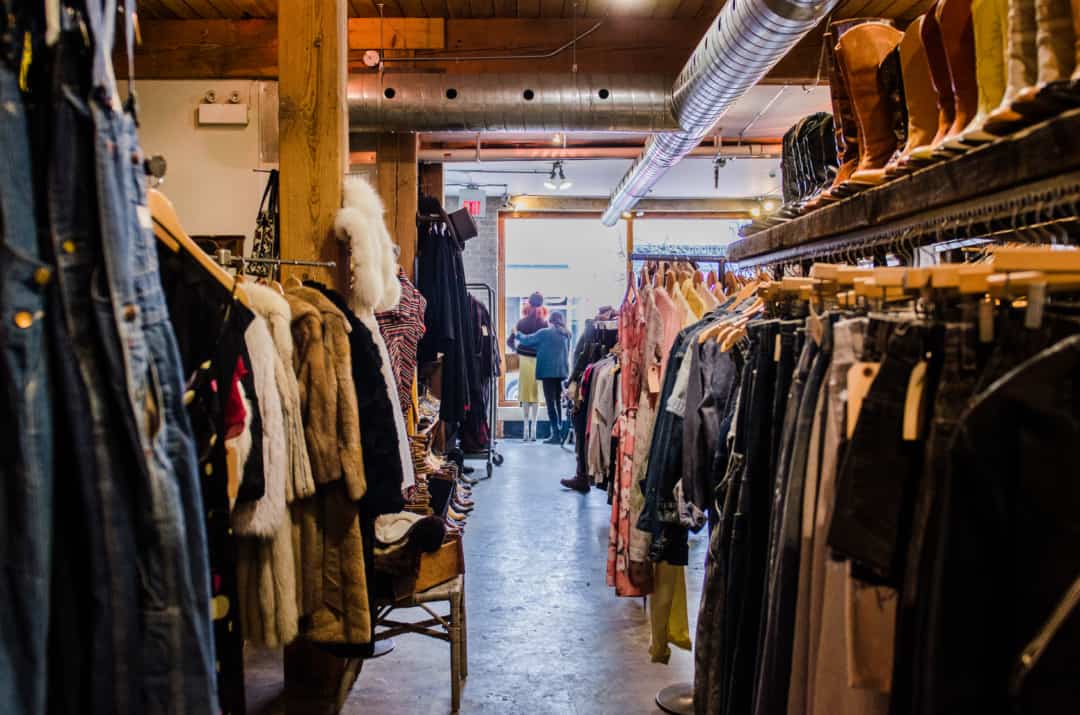There are few things that spark more joy in my life than fashion. It’s been my passion, identity, and therapy. I live for the next piece of clothing that I can get my hands on, roam malls until my feet ache, and follow every fashion show with an unrelenting dedication. I saw my future in an episode of Sex and The City when Carrie Bradshaw realized that she had no money because she spent it all on shoes.
However, as fashion month and the Global Climate Strikes intersected in September, it seems necessary to look at the everyday practice of shopping in order to better understand its impact on the environment.
Like many markers of climate destruction, the fashion industry saw a major boom after World War II. Advancements in technology meant that brands could use synthetic fabrics, efficient factory lines, and outsourced labour for mass production.
The expansion of the global middle class, which has only risen since the advent of the twenty-first century, created a captive market to buy these clothes, fuelling both the economic growth and pollutive nature of fashion brands. According to a 2018 article from Nature Climate Change, textile production now emits 1.2 billion tonnes of carbon dioxide equivalents per year — more than international flights and maritime shipping.
The main culprit of this crisis is fast fashion, which is the equivalent to fast food in the moral hierarchy — meaning it barely scrapes the barrel of decency. Large clothing brands, like H&M and Zara, seek capital above all by ensuring that you buy new pieces every season, and they don’t care about the negative effects of this consumption pattern. Actually, they count on you brushing your hands through racks of clothing while disregarding the negative effects.
Slow fashion is designed to help you consume mindfully in response to fast fashion. It’s epitomized by the ‘capsule wardrobe’ — the idea that closets should contain timeless pieces with a limited amount of seasonal variation. The assumption is that the lack of sustainability comes from overconsumption, and that clothing is overconsumed.
I’m not in a position to prescribe the capsule wardrobe. I currently have 222 pieces of clothing in my closet — without counting dirty items, undergarments, socks, winter apparel, shoes, bags, jewelry, and the pieces at my childhood home. It’s foreign to me how a person could own less and still get dressed in the morning.
That being said, our world is on fire. And this scientific reality forces us to consider how to tackle the climate crisis within the parameters of our social reality — what we can give up, for the ability to change our lifestyle intersects with a host of other social justice issues, making it so that certain populations actually can’t give up everything.
Since it would be absurd to ask low-income families to invest in more expensive, higher quality clothing without trade-offs, and we remain far away from eco-conscious brands becoming accessible options, it is the responsibility of wealthy consumers and nations to make sacrifices for change.
I can’t incentivize slow fashion because I’m not a policy expert. What I can do is appeal to shopaholics, like myself, who have the means to alter their consumption patterns.
We must build a relationship with clothing that emphasizes how fashion expresses personal identity and cultural values, not material wealth relative to others. This can enable a balance between sustainable behaviour and human culture. So before you buy that next item, consider whether it’s absolutely necessary, where the clothes originate, and whether there are better alternatives.
I don’t want to throw your favourite French army jacket into a dump with half-eaten McDonald’s burgers. Slow fashion doesn’t have to mean purge and abstain. I only ask to break the awing hypnosis induced every time you enter a store. Stop dragging your hands through that endless array of clothing and take the initiative to resolve your dangerous shopping habits.
This can include prioritizing brands with an ethical, eco-conscious mandate; Marie-Kondo-ing your closet in minimalist terms. Shopping vintage, upcycling, or looking for clothing with non-synthetic, organic ingredients are also admirable efforts.
However you approach slow fashion, just try to crack the surface, because once you have your footing, everyone can move forward.


